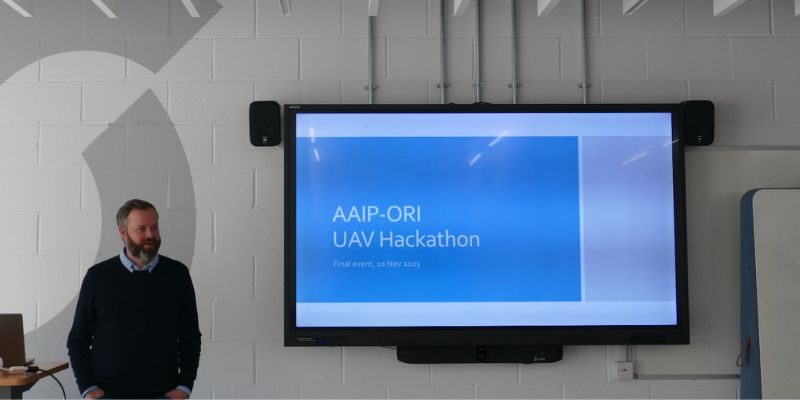Assuring the safe autonomy of drones in challenging frontiers
Posted on Friday 15 December 2023

Taking on the technical challenge
A total of 34 participants from the University of York and the Oxford Robotics Institute participated in this challenge to develop a safe return-to-home function and an associated safety case for an Uncrewed Aerial Vehicle (UAV).
Working in five teams, the group set out to establish how a return-to-home function would activate in the UAV in the event of a failure, such as the loss of the remote controller signal, and how the UAV would then safely navigate home unaided.
The teams worked from May to November, with check-ins during July and August, and culminating in a site visit to Boulby mine, a working polyhalite and salt mine in the North East of England, and a final presentation held at the Institute for Safe Autonomy.
Understanding the environment first hand
During the trip to Boulby Mine members of the teams experienced these challenging conditions first hand. The mine is the deepest in the UK at 1.4km underground at its deepest point, and features a large multidisciplinary science laboratory. Because of the depth the mine is free from cosmic background radiation, making it suitable for a wide-range of scientific experiments. This enabled the team to conduct their own experiments, better understand the environmental conditions within the mine, and record footage using a mobile LIDAR unit which uses light in the form of a pulsed laser to measure distance. The information the teams collected during the mine visit formed part of their final presentations.
Navigating obstacles
In environments such as deep mines the usual methods of navigation, like GPS, can’t be used. The teams needed to design and develop a series of systems and sensors which worked to bring the UAV safely home, however they first needed to understand the limitations of the UAVs in terms of both software and hardware.
To help with this the organising team with the help of ISA technical staff created an artificial mine in Test Space 1 the largest testing space in the Institute for Safe Autonomy. The artificial mine was built to mirror the main parts of the Yorkshire Boulby mine excavation front. It consisted of 4 corridors, it also had parts of the mine's infrastructure including survey markers, wires and ventilation tubes. The artificial mine was scanned with a terrestrial laser scanner (TLS) and a 3D vector model was created to allow the teams to run simulations on their computers. This enabled the teams to try a physical test flight after their autonomous flight algorithms were tested in simulation environments.
Prioritising safety
Supporting safe operation of a UAV in a harsh physical environment such as one with lots of dust particles, temperature changes and rock falls is a huge challenge. All of these factors affect UAV stability and operating time and, without good localisation for the UAV to assess the environment and follow landmarks, there is considerable risk to both the safety of the asset and human effort to recover the UAV should it fail to return home.
In this challenge the teams took the approach of considering whole systems safety - particularly the Operational Domain Model (ODM) - need for supporting infrastructure (waymarkers), and procedures (how people work) as well as for the technical solution in the drone.
And the winner is…
On the day, the judges voted Team 3 as the overall winners, which comprised research fellow Philippa Ryan, graduate research student, Samuel Sze from the Oxford Robotics Institute, research student, Arjun Badyal from the University of York, PhD student Hasan Bin Firoz also from the University of York, Ben Hardin from Oxford Robotics Institute, and research associate Felix Ulrich-Oltean from the University of York.
A huge thanks to Lars Kunze for organising this as part of his AAIP Fellowship and to his fellow organisers, Paulina Lewinska, Victoria Hodge, and Richard Hawkins, and judges Ibrahim Habli and John Molloy for their input.
Impact and next steps
The study has already resulted in a joint paper and the findings will be used to produce an additional two papers. The first will describe the winning safety case for autonomous flight of UAV in the mine, and the second will be to release the artefacts (self-adaptive 3D simulation) produced during the experimental phase of the event.







